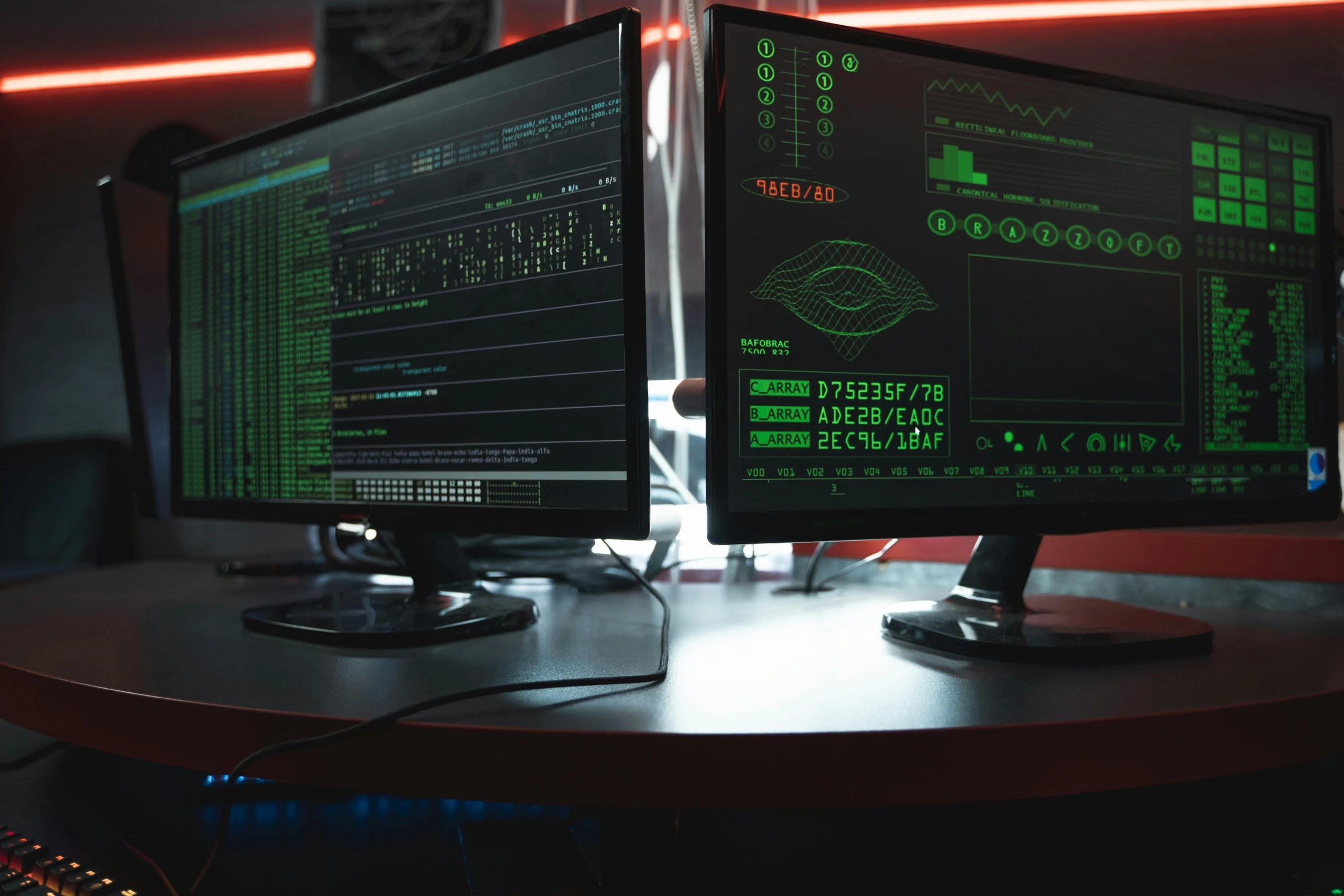Every CISO knows the uncomfortable truth: you can’t defend what you can’t see. Yet organizations spend millions on sophisticated detection systems while remaining blind to their actual attack surface. The adversary exploits this blind spot with ruthless efficiency.
Here’s what keeps security leaders awake at night: that server no one remembers deploying. The unpatched application running in a forgotten cloud instance. The contractor’s laptop still accessing your network three months after their contract ended. These aren’t edge cases. They’re the norm.
The Problem Isn’t Sophistication—It’s Visibility
When the cyber attack comes—and it will come—the adversary doesn’t need advanced persistent threats or zero-day exploits. They walk through the door you didn’t know existed. The statistics are brutal: IT downtime costs organizations $9,000 per minute on average. But the real damage isn’t just financial. It’s the erosion of customer trust, regulatory penalties, and the uncomfortable conversation you’ll have with the board about how an attacker accessed your network through an asset you had no idea existed.
The challenge compounds daily. Your IT estate expands continuously through cloud deployments, IoT devices, contractor equipment, and shadow IT. Traditional approaches to asset management—spreadsheets, quarterly audits, manual inventories—were obsolete before they were implemented. By the time you document today’s infrastructure, it’s already changed.
This isn’t a technology problem. It’s a foundational security failure.
Why Asset Management Remains Unsolved
Security leaders understand the importance of asset management. The CIS Critical Controls list hardware and software inventory as the first two security measures. NIST places asset management first in its Cybersecurity Framework. The SEC explicitly requires organizations to know where their assets are located and how they’re protected.
Yet despite this universal recognition, asset management remains one of cybersecurity’s most persistent challenges. The reason is simple: we’re attracted to the exciting work. Threat hunting. Red teaming. AI-powered detection. These initiatives generate headlines and board-level enthusiasm. Asset management generates spreadsheets.
But here’s the uncomfortable reality: every sophisticated security program built on a weak asset management foundation is a castle built on sand. You can’t threat hunt effectively when you don’t know what assets exist. You can’t prioritize vulnerability remediation when your inventory is incomplete. You can’t respond to incidents rapidly when you’re unsure which systems are affected.
The adversary understands this. They target the gaps in your visibility because those gaps are low-risk, high-reward attack vectors.
What Effective Asset Management Actually Means
Cybersecurity asset management isn’t about maintaining a list. It’s about continuous, automated discovery and assessment of everything connected to your network. Every device, every application, every cloud resource, every user account. If it connects to your infrastructure, it needs to be discovered, classified, and monitored.
This requires three fundamental capabilities:
Complete, real-time inventory. Not a snapshot. Not a quarterly audit. Continuous discovery that automatically identifies new assets the moment they connect to your network. This inventory must include traditional endpoints, cloud workloads, IoT devices, operational technology, and everything in between. You need to know what exists, where it exists, who owns it, and how it’s configured.
Risk assessment and prioritization. Not all assets carry equal risk. A developer’s laptop and a database containing customer financial records require different security controls. Effective asset management identifies which assets are critical, which are vulnerable, and which combination of criticality and vulnerability demands immediate attention. This isn’t a one-time categorization. Risk profiles change as systems age, configurations drift, and threats evolve.
Automated response and enforcement. Discovery and assessment mean nothing without action. When an unmanaged device appears on your network, you need automated workflows that quarantine it, alert the security team, and enforce policy. When a critical system misses a security patch, you need immediate notification and remediation tracking. Manual processes can’t scale to handle modern IT environments.
The Most Dangerous Mistakes
Organizations make predictable mistakes with asset management, and each creates exploitable vulnerabilities:
Treating asset management as an IT project rather than a security imperative. When finance or IT operations owns asset management, the focus shifts to cost optimization and license compliance rather than security risk. These are valuable outcomes, but they miss the point. Asset management must be security-driven, continuously updated, and integrated into incident response workflows.
Relying on single-source data. Your endpoint detection system sees some assets. Your vulnerability scanner sees others. Your cloud console shows different resources. Each tool provides partial visibility, creating dangerous blind spots. The adversary operates in those blind spots. Effective asset management correlates data from multiple sources to build a comprehensive, deduplicated inventory.
Ignoring asset lifecycle management. Assets age. Software goes out of support. Hardware reaches end-of-life. These transitions create critical vulnerabilities. Systems running obsolete operating systems can’t receive security patches. Applications using deprecated libraries contain known exploits. Without lifecycle tracking, these vulnerable assets remain in production, offering adversaries easy entry points.
Failing to automate. Manual asset tracking fails for a simple reason: humans make mistakes and can’t scale. In environments where infrastructure changes dozens or hundreds of times per day, manual processes are obsolete before they’re completed. The only viable approach is automated discovery, classification, and monitoring.
Treating asset management as a one-time project. IT environments are dynamic. Cloud resources spin up and down continuously. Employees join and leave. Applications update. New devices connect. Asset management isn’t a project you complete. It’s a continuous process that requires ongoing attention, regular audits, and constant refinement.
Best Practices That Actually Work
Organizations that solve asset management share common approaches:
Invest in purpose-built security asset management platforms. General-purpose IT service management tools optimize for different outcomes—cost management, ticket tracking, hardware provisioning. Security requires purpose-built platforms that prioritize visibility, risk assessment, and rapid response. These platforms must integrate with your existing security stack, correlate data from multiple sources, and provide actionable intelligence rather than raw data dumps.
Automate discovery continuously, not periodically. Weekly scans miss six days of changes. Daily scans miss hours of exposure. Continuous discovery identifies assets in real-time, allowing immediate assessment and response. This is particularly critical for cloud environments where resources scale dynamically based on demand.
Integrate asset data across your security operations. Asset management shouldn’t be a standalone system. It must feed into vulnerability management, incident response, threat intelligence, and compliance reporting. When a new vulnerability is disclosed, you need instant answers about which assets are affected. When an incident occurs, you need immediate access to configuration details, ownership information, and recent changes.
Establish clear ownership and accountability. Every asset needs an owner—someone responsible for its security, maintenance, and eventual decommissioning. Unknown or unmanaged assets are security failures waiting to happen. Automated discovery helps identify orphaned resources, but human accountability ensures they’re properly secured or removed.
Include cloud assets from day one. Cloud infrastructure deserves special attention. Resources can be deployed in seconds by anyone with appropriate credentials. Without continuous discovery, your cloud environment becomes an unmanaged shadow IT problem. Asset management must extend across all cloud platforms your organization uses, tracking instances, storage, databases, and service configurations.
Plan for secure disposal. End-of-life asset management matters as much as deployment. Systems must be properly decommissioned, data must be securely erased, and access must be revoked. The adversary loves forgotten systems that remain connected to your network but no longer receive security updates.
The Bottom Line
You will be breached. The question isn’t if, but when. And when that breach occurs, your asset management program will determine how bad it gets.
Strong asset management allows you to identify the attack’s entry point immediately, understand lateral movement paths, contain the threat before it spreads, and recover without catastrophic business impact. Poor asset management means confusion, delayed response, wider compromise, and larger losses.
The adversary counts on your blind spots. Every unknown asset is an opportunity they’ll exploit. Every misconfigured system is a weakness they’ll leverage. Every orphaned account is an access path they’ll abuse.
The technology exists to solve this problem. Purpose-built security asset management platforms can discover assets continuously, assess risk automatically, and enforce policy consistently. The question is whether your organization has the discipline to implement these fundamentals properly.
Most security failures aren’t sophisticated attacks. They’re basic oversights—the server nobody knew about, the application nobody patched, the account nobody disabled. These failures are preventable, but prevention requires commitment to the unsexy work of asset management.
If you’re unsure where to start or how to implement these practices effectively, talk to your trusted advisor. But don’t wait. The adversary isn’t waiting, and neither should you. The asset you don’t know about today could be the breach headline tomorrow.
The question you need to answer isn’t whether you can afford to invest in proper asset management. It’s whether you can afford not to.








